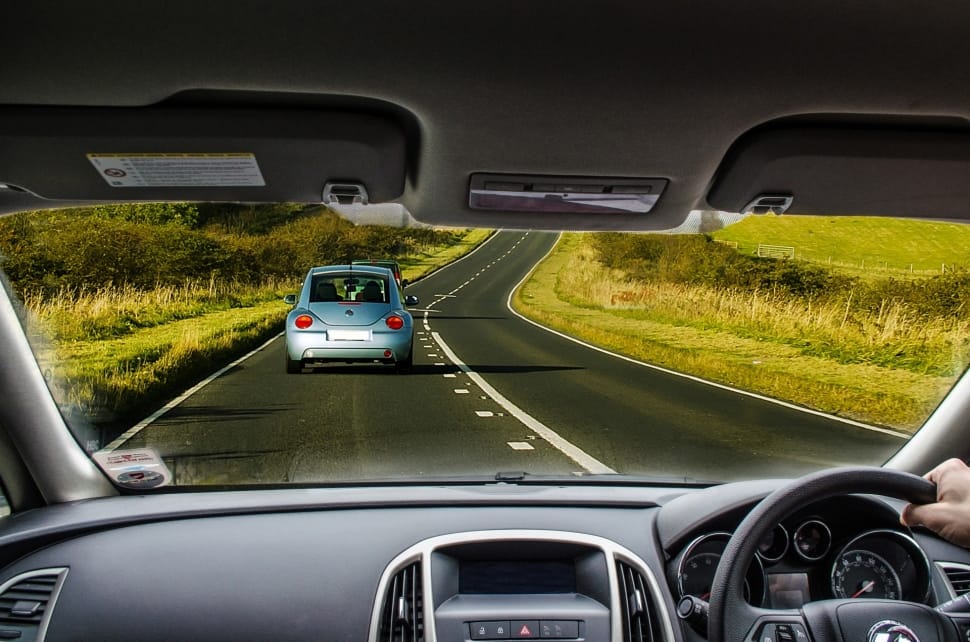Driving on the left or right side of the road is a practice that varies across countries worldwide. Have you ever wondered why some countries drive on the left while others drive on the right? The choice of which side to drive on has historical, cultural, and practical reasons.
In this blog post, we will explore the factors that influence driving norms and delve into the origins and implications of driving on different sides of the road. Understanding these differences can provide valuable insights into the diverse customs and road systems around the world.
Table of Contents
Historical Origins
The historical origins of driving on the left or right can be attributed to several factors that have shaped traffic norms and road design over time. Understanding the origins of this practice provides insights into why certain countries drive on the left side of the road while others drive on the right. Here is an extended version explaining the historical context:
Ancient Times:
- People in ancient civilizations, such as ancient Rome and Egypt, often traveled on the left side of the road.
- The predominant reason for this was to ensure their right arm, which was typically stronger and more dominant, remained free for defense or greeting.
- This practice allowed individuals to easily draw their weapons or extend their right arm in a gesture of goodwill.
Medieval Influence:
- The tradition of traveling on the left side continued into medieval times.
- During this period, knights on horseback would ride on the left side of the road to have their right arm, holding a weapon, closer to potential adversaries.
- This practice influenced the design of early carriages, which had the driver’s seat positioned on the right side to have better control with their right hand.
Development of Carriages and Automobiles:
- As carriages and later automobiles became popular, the prevailing tradition of driving on the left persisted.
- The design of carriages, particularly in European countries, had the driver seated on the right side and controlling the horses with their left hand.
- When automobiles were introduced, this existing setup influenced their design, leading to right-hand drive vehicles in countries where driving on the left was prevalent.
Dirt Tracks and Visibility:
- In the early days of road construction, many roadways were simply dirt tracks.
- Driving on the left side of the road had practical advantages, especially in countries with a left-hand driving tradition.
- By driving on the left, the driver had a better view of oncoming traffic and potential dangers, as their line of sight was not obstructed by the vehicle’s body.
It’s important to note that while many countries have adopted driving on the right side of the road, there are still several nations, such as the United Kingdom, Australia, and India, where the tradition of driving on the left persists. This is due to a combination of historical practices, cultural factors, and the influence of former colonial powers.
Standardization Efforts and Regional Variations
As transportation systems evolved and road networks expanded, the need for standardization in driving practices became increasingly apparent. Standardized rules of the road were essential to ensure smoother traffic flow, reduce accidents, and enhance overall safety. In the late 18th and early 19th centuries, efforts were made in several countries to establish consistent driving practices. However, these standardization efforts resulted in regional variations, with some countries driving on the left side of the road while others drove on the right.
France and the Shift to Driving on the Right:
- In 1794, France implemented a significant change by adopting driving on the right-hand side of the road.
- This decision was primarily influenced by the French Revolution, which sought to break away from traditional practices associated with the monarchy.
- The adoption of driving on the right in France was subsequently followed by many other European countries.
British Empire and the Persistence of Driving on the Left:
- In contrast to the shift towards driving on the right in mainland Europe, the British Empire and its colonies maintained the tradition of driving on the left.
- This practice can be traced back to the dominance of horse-drawn carriages, where the driver would sit on the right-hand side of the vehicle to have a clear view of the passing carriage wheels.
- The British Empire’s influence on its colonies, including India, Australia, and various African nations, contributed to the persistence of driving on the left in these regions.
Political Alliances and Cultural Influences:
- Regional variations in driving practices were often influenced by political alliances and cultural traditions.
- Countries with historical connections to France, such as Belgium, the Netherlands, and Germany, adopted driving on the right as a result of their proximity and shared borders.
- Similarly, countries with British colonial influence, including those in Southeast Asia and the Caribbean, continued to drive on the left.
Neighboring Countries and Cross-Border Consistency:
- The driving practices of neighboring countries also played a role in determining regional norms.
- Geographical proximity and the need for consistent traffic flow at borders led to some countries aligning their driving practices with their neighbors.
- For example, Sweden, which initially drove on the left, transitioned to driving on the right in 1967 to be consistent with its neighboring countries.
Despite standardization efforts, regional variations in driving on the left or right persist to this day. These variations are a testament to the complex interplay of historical, political, and cultural factors that shape transportation practices worldwide. Whether driving on the left or right, the underlying objective remains the same: ensuring the safety and efficiency of road users.
Factors Influencing Driving Side and Choice of Driving Practices

The choice of driving side in a country can be influenced by various factors, ranging from historical precedent to road infrastructure and traffic flow patterns. Understanding these factors helps shed light on why some countries drive on the left while others drive on the right.
Historical Precedent and Colonial Influence:
- Historical precedent plays a significant role in determining driving practices. Countries that were once colonies of European powers often adopted the driving side of their colonizers.
- British colonial influence, for example, led to the adoption of left-hand driving in countries like India, Australia, and various African nations.
- In contrast, countries influenced by French or Napoleonic law, such as France itself and many of its former colonies, drive on the right.
Road Infrastructure and Vehicle Design:
- Road infrastructure and vehicle design considerations also play a part in determining the choice of driving side.
- Countries with right-hand driving often have vehicles designed with left-hand drive, allowing the driver to have a better view of oncoming traffic when overtaking.
- This design aligns with the common practice of overtaking on the left side of the road, as it provides better visibility of the road ahead.
Traffic Flow Patterns and Efficiency:
- Traffic flow patterns can also influence the choice of driving side. Certain road features and traffic management systems work more efficiently when aligned with the prevailing driving side.
- For example, roundabouts, which are widely used in many countries, are designed to facilitate smooth traffic flow when vehicles circulate in a clockwise direction (right-hand driving) or counterclockwise direction (left-hand driving).
- Similarly, right-hand turns can be more streamlined in countries that drive on the right, as it eliminates the need for vehicles to cross opposing lanes of traffic.
International Standardization Efforts:
- Despite historical and cultural influences, there have been attempts to standardize driving practices internationally.
- The Vienna Convention on Road Traffic, an international treaty signed by numerous countries, aims to harmonize road traffic regulations, including driving side, to improve road safety and facilitate international traffic.
- However, not all countries have ratified this convention, and regional variations in driving practices persist.
Transitioning from Left-Hand Driving to Right-Hand Driving: Challenges and Considerations
Throughout history, there have been instances where countries made the significant decision to transition from driving on the left to driving on the right or vice versa. Such transitions require meticulous planning, comprehensive infrastructure adjustments, and extensive public awareness campaigns to ensure a smooth and successful shift. While these transitions are relatively rare, they are often driven by the desire to align with neighboring countries or enhance road safety through standardization.
Sweden’s Transition to Right-Hand Driving:

- One of the most notable examples of a successful transition is Sweden, which made the switch from left-hand driving to right-hand driving on September 3, 1967.
- The decision to transition was primarily motivated by the aim to improve road safety and align with neighboring countries, most of which drove on the right.
- The transition involved extensive preparations, including infrastructure modifications, updating road signs and markings, and educating the public about the upcoming change.
Planning and Infrastructure Adjustments:
- Transitioning from one driving side to another requires careful planning to address various challenges.
- Infrastructure adjustments play a crucial role, including changing traffic signal positions, modifying road markings, and reconfiguring intersections to accommodate the new driving pattern.
- Road signs must be replaced or relocated to ensure clarity and consistency for drivers during the transition.
Public Awareness and Education:
- Public awareness campaigns are essential to inform drivers, pedestrians, and other road users about the impending change.
- Educational initiatives, such as distributing informational brochures, conducting media campaigns, and offering driver training programs, help familiarize people with the new driving rules and emphasize the importance of adapting to the transition.
Harmonization and Standardization:
- Some countries consider transitioning to harmonize with neighboring countries, especially when there are frequent cross-border movements or economic integration.
- Standardization efforts aim to improve road safety and facilitate international travel by aligning driving practices with widely accepted international norms, such as driving on the right.
Rare Occurrences:
- While transitions between driving sides are infrequent, they have been implemented successfully in the past.
- Factors such as political will, public support, and well-executed planning contribute to the success of these transitions.
- However, due to the complexity and potential disruptions involved, such transitions are usually considered as last-resort measures when the benefits outweigh the challenges.
Transitioning from left-hand driving to right-hand driving, or vice versa, is a significant undertaking that requires thorough planning, infrastructure adjustments, and public cooperation. While rare, these transitions demonstrate a commitment to enhance road safety, align with neighboring countries, or promote standardization. Through careful coordination and effective communication, countries can navigate the challenges associated with driving side transitions and ultimately achieve a safer and more harmonized road network.
Conclusion
Driving on the left or right side of the road is a reflection of a country’s historical, cultural, and practical considerations. The choice is deeply rooted in the customs and traditions of each nation. Understanding why some countries drive on the left and others on the right provides valuable insights into the diverse practices that shape our global road systems. As travelers, it’s essential to familiarize ourselves with the driving norms of the countries we visit and adapt accordingly. By respecting local driving customs, we can ensure safer and more enjoyable experiences on the road.

